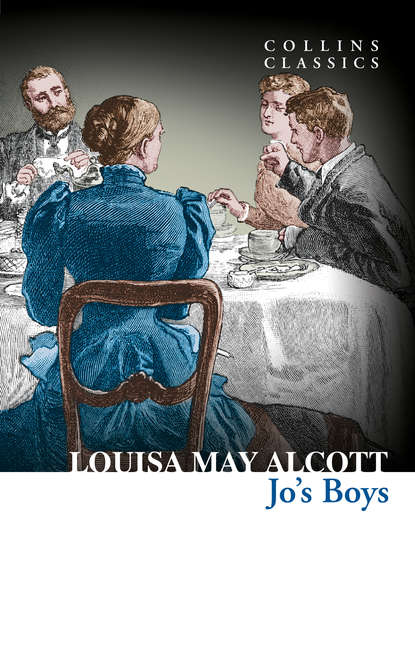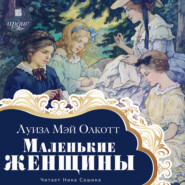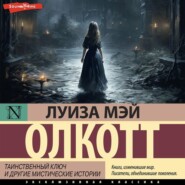По всем вопросам обращайтесь на: info@litportal.ru
(©) 2003-2024.
✖
Jo’s Boys
Настройки чтения
Размер шрифта
Высота строк
Поля
Jo’s Boys
Louisa May Alcott
HarperCollins is proud to present its incredible range of best-loved, essential classics.Set ten years after ‘Little Men’, ‘Jo’s Boys’ is the final novel in the unofficial series that follows the ups and downs of the March family.The Plumfield boys – including rebellious Dan, sailor Emil and promising musician Nat – are now grown up, and finding their places in the world. As they deal with the challenges of growing up, finding careers and falling in love, Jo remains at the heart of the family, steady in her love for her ‘boys’ as she steers them through young adulthood, and even murder.Here is a charming and bittersweet conclusion to the story of a family first introduced to us in ‘Little Women’.
JO’S BOYS
Louisa May Alcott
CONTENTS
Cover (#ua1f1259d-849c-509b-bfa2-05d1982bad2f)
Title Page (#u546b00d8-f52d-5d4b-8562-d2ba934c0971)
History of Collins (#u0f8f5e08-c5b6-5e88-8735-04d59e31f3a4)
Life & Times (#u2291b600-0b1b-501a-9314-6a9f239ba22d)
Chapter 1: Ten Years Later (#u877130f9-166d-58d4-9874-f41dfb8a96a5)
Chapter 2: Parnassus (#u494da41b-5313-584e-aebf-8ed15d1d5aee)
Chapter 3: Jo’s Last Scrape (#uee07ec14-8c27-5a18-8835-70da881b63d2)
Chapter 4: Dan (#ufc9870f5-5c58-5cd3-8f87-eb0b2f38aa48)
Chapter 5: Vacation (#ua114c185-7260-5237-ba6a-526f99946a23)
Chapter 6: Last Words (#litres_trial_promo)
Chapter 7: The Lion and the Lamb (#litres_trial_promo)
Chapter 8: Josie Plays Mermaid (#litres_trial_promo)
Chapter 9: The Worm Turns (#litres_trial_promo)
Chapter 10: Demi Settles (#litres_trial_promo)
Chapter 11: Emil’s Thanksgiving (#litres_trial_promo)
Chapter 12: Dan’s Christmas (#litres_trial_promo)
Chapter 13: Nat’s New Year (#litres_trial_promo)
Chapter 14: Plays at Plumfield (#litres_trial_promo)
Chapter 15: Waiting (#litres_trial_promo)
Chapter 16: In the Tennis-Court (#litres_trial_promo)
Chapter 17: Among the Maids (#litres_trial_promo)
Chapter 18: Class Day (#litres_trial_promo)
Chapter 19: White Roses (#litres_trial_promo)
Chapter 20: Life for Life (#litres_trial_promo)
Chapter 21: Aslauga’s Knight (#litres_trial_promo)
Chapter 22: Positively Last Appearance (#litres_trial_promo)
Classic Literature: Words and Phrases adapted from the Collins English Dictionary (#litres_trial_promo)
Copyright (#litres_trial_promo)
About the Publisher (#litres_trial_promo)
History of Collins (#ulink_3ced8351-cd30-5b56-9967-ebadd5b16552)
In 1819, millworker William Collins from Glasgow, Scotland, set up a company for printing and publishing pamphlets, sermons, hymn books, and prayer books. That company was Collins and was to mark the birth of HarperCollins Publishers as we know it today. The long tradition of Collins dictionary publishing can be traced back to the first dictionary William published in 1824, Greek and English Lexicon. Indeed, from 1840 onwards, he began to produce illustrated dictionaries and even obtained a licence to print and publish the Bible.
Soon after, William published the first Collins novel, Ready Reckoner; however, it was the time of the Long Depression, where harvests were poor, prices were high, potato crops had failed, and violence was erupting in Europe. As a result, many factories across the country were forced to close down and William chose to retire in 1846, partly due to the hardships he was facing.
Aged 30, William’s son, William II, took over the business. A keen humanitarian with a warm heart and a generous spirit, William II was truly “Victorian” in his outlook. He introduced new, up-to-date steam presses and published affordable editions of Shakespeare’s works and ThePilgrim’s Progress, making them available to the masses for the first time. A new demand for educational books meant that success came with the publication of travel books, scientific books, encyclopedias, and dictionaries. This demand to be educated led to the later publication of atlases, and Collins also held the monopoly on scripture writing at the time.
In the 1860s Collins began to expand and diversify and the idea of “books for the millions” was developed. Affordable editions of classical literature were published, and in 1903 Collins introduced 10 titles in their Collins Handy Illustrated Pocket Novels. These proved so popular that a few years later this had increased to an output of 50 volumes, selling nearly half a million in their year of publication. In the same year, The Everyman’s Library was also instituted, with the idea of publishing an affordable library of the most important classical works, biographies, religious and philosophical treatments, plays, poems, travel, and adventure. This series eclipsed all competition at the time, and the introduction of paperback books in the 1950s helped to open that market and marked a high point in the industry.
HarperCollins is and has always been a champion of the classics, and the current Collins Classics series follows in this tradition—publishing classical literature that is affordable and available to all. Beautifully packaged, highly collectible, and intended to be reread and enjoyed at every opportunity.
Life & Times (#ulink_c6a7e161-283a-51af-964c-ad4d8b546376)
About the Author
Louisa May Alcott was born into a family of American transcendentalists, the second of four daughters. Transcendentalism was essentially a movement initiated in reaction to a feeling that society was eroding its mores and was consequently in need of reform. Alcott was therefore immersed in an environment of progressive thinking and intellectualization during her formative years. This included a strong moral objection to the notion of slavery, which would become the lynchpin of the American Civil War (1861–1865). The Alcotts hid a runaway slave in their house in 1847, such was their level of commitment to the cause.
During the war itself, Louisa May Alcott worked as a nurse and it was her experiences that served to hone her storytelling skill. It wasn’t until early middle age, however, that she became a success. In 1868 the first part of Little Women was published to great acclaim, and her reputation grew from there. However, her life was not a long one, for she died of ill health at the age of 55, in 1888.
Apart from the Little Women trilogy, she wrote many other novels and children’s stories, which are best known in the United States. Her writing style remained more or less similar to Little Women, because she was primarily interested in the comings and goings of people in her stories. They are the forerunner of the cast novels written by such modern-day writers as Maeve Binchy, where the stories are windows into many interrelated lives.
On a socio-political level, Alcott’s legacy is that she is held aloft as an early feminist and humanitarian. Her high intellect rendered her unable to resist the testing of conventions in her real life and in her literary alter-egos. She lived through the turbulence of the American Civil War and saw America metamorphose into a modern nation where slaves were freed of their literal chains and women were freed of their metaphorical chains. It was a dual emancipation, and Alcott effectively documented the event in her prose.
Little Women
Published in its entirety in 1880, Little Women is a novel about an American family from a female perspective. Alcott based the story on the formative years of herself and her three sisters. It is a novel that says a great deal about people and society without requiring a complex or sweeping plot to carry the reader along.
The primary theme is that siblings each have different personalities despite having been brought up in the same family environment—nature versus nurture. Alcott gives each of the four sisters particular idiosyncrasies that signature their personalities and generate advantages and disadvantages for them. Thus they are each known for being vain, quick-tempered, coy, and selfish. To some extent, the novel is also about the extent to which children live up to their ascribed personality traits once they are known for them, or rather are allotted them as if parents need to compartmentalize their children’s traits. Alcott generally regards the four specific traits as personality flaws, as opposed to strengths, so the four sisters stuggle to overcome them rather than embrace them.
However, Alcott was writing at a time when people held deeply Christian values, where the ideal person was the opposite of all those traits: modest, level-headed, outgoing, and giving. The idea was to pretend to be that ideal, albeit an unattainable, synthesis. It was all about being virtuous and wholesome in the eyes of the Christian God, although fundamentally it was about being a good prospect as potential wife or husband material in the eyes of others who held the same views.
Louisa May Alcott
HarperCollins is proud to present its incredible range of best-loved, essential classics.Set ten years after ‘Little Men’, ‘Jo’s Boys’ is the final novel in the unofficial series that follows the ups and downs of the March family.The Plumfield boys – including rebellious Dan, sailor Emil and promising musician Nat – are now grown up, and finding their places in the world. As they deal with the challenges of growing up, finding careers and falling in love, Jo remains at the heart of the family, steady in her love for her ‘boys’ as she steers them through young adulthood, and even murder.Here is a charming and bittersweet conclusion to the story of a family first introduced to us in ‘Little Women’.
JO’S BOYS
Louisa May Alcott
CONTENTS
Cover (#ua1f1259d-849c-509b-bfa2-05d1982bad2f)
Title Page (#u546b00d8-f52d-5d4b-8562-d2ba934c0971)
History of Collins (#u0f8f5e08-c5b6-5e88-8735-04d59e31f3a4)
Life & Times (#u2291b600-0b1b-501a-9314-6a9f239ba22d)
Chapter 1: Ten Years Later (#u877130f9-166d-58d4-9874-f41dfb8a96a5)
Chapter 2: Parnassus (#u494da41b-5313-584e-aebf-8ed15d1d5aee)
Chapter 3: Jo’s Last Scrape (#uee07ec14-8c27-5a18-8835-70da881b63d2)
Chapter 4: Dan (#ufc9870f5-5c58-5cd3-8f87-eb0b2f38aa48)
Chapter 5: Vacation (#ua114c185-7260-5237-ba6a-526f99946a23)
Chapter 6: Last Words (#litres_trial_promo)
Chapter 7: The Lion and the Lamb (#litres_trial_promo)
Chapter 8: Josie Plays Mermaid (#litres_trial_promo)
Chapter 9: The Worm Turns (#litres_trial_promo)
Chapter 10: Demi Settles (#litres_trial_promo)
Chapter 11: Emil’s Thanksgiving (#litres_trial_promo)
Chapter 12: Dan’s Christmas (#litres_trial_promo)
Chapter 13: Nat’s New Year (#litres_trial_promo)
Chapter 14: Plays at Plumfield (#litres_trial_promo)
Chapter 15: Waiting (#litres_trial_promo)
Chapter 16: In the Tennis-Court (#litres_trial_promo)
Chapter 17: Among the Maids (#litres_trial_promo)
Chapter 18: Class Day (#litres_trial_promo)
Chapter 19: White Roses (#litres_trial_promo)
Chapter 20: Life for Life (#litres_trial_promo)
Chapter 21: Aslauga’s Knight (#litres_trial_promo)
Chapter 22: Positively Last Appearance (#litres_trial_promo)
Classic Literature: Words and Phrases adapted from the Collins English Dictionary (#litres_trial_promo)
Copyright (#litres_trial_promo)
About the Publisher (#litres_trial_promo)
History of Collins (#ulink_3ced8351-cd30-5b56-9967-ebadd5b16552)
In 1819, millworker William Collins from Glasgow, Scotland, set up a company for printing and publishing pamphlets, sermons, hymn books, and prayer books. That company was Collins and was to mark the birth of HarperCollins Publishers as we know it today. The long tradition of Collins dictionary publishing can be traced back to the first dictionary William published in 1824, Greek and English Lexicon. Indeed, from 1840 onwards, he began to produce illustrated dictionaries and even obtained a licence to print and publish the Bible.
Soon after, William published the first Collins novel, Ready Reckoner; however, it was the time of the Long Depression, where harvests were poor, prices were high, potato crops had failed, and violence was erupting in Europe. As a result, many factories across the country were forced to close down and William chose to retire in 1846, partly due to the hardships he was facing.
Aged 30, William’s son, William II, took over the business. A keen humanitarian with a warm heart and a generous spirit, William II was truly “Victorian” in his outlook. He introduced new, up-to-date steam presses and published affordable editions of Shakespeare’s works and ThePilgrim’s Progress, making them available to the masses for the first time. A new demand for educational books meant that success came with the publication of travel books, scientific books, encyclopedias, and dictionaries. This demand to be educated led to the later publication of atlases, and Collins also held the monopoly on scripture writing at the time.
In the 1860s Collins began to expand and diversify and the idea of “books for the millions” was developed. Affordable editions of classical literature were published, and in 1903 Collins introduced 10 titles in their Collins Handy Illustrated Pocket Novels. These proved so popular that a few years later this had increased to an output of 50 volumes, selling nearly half a million in their year of publication. In the same year, The Everyman’s Library was also instituted, with the idea of publishing an affordable library of the most important classical works, biographies, religious and philosophical treatments, plays, poems, travel, and adventure. This series eclipsed all competition at the time, and the introduction of paperback books in the 1950s helped to open that market and marked a high point in the industry.
HarperCollins is and has always been a champion of the classics, and the current Collins Classics series follows in this tradition—publishing classical literature that is affordable and available to all. Beautifully packaged, highly collectible, and intended to be reread and enjoyed at every opportunity.
Life & Times (#ulink_c6a7e161-283a-51af-964c-ad4d8b546376)
About the Author
Louisa May Alcott was born into a family of American transcendentalists, the second of four daughters. Transcendentalism was essentially a movement initiated in reaction to a feeling that society was eroding its mores and was consequently in need of reform. Alcott was therefore immersed in an environment of progressive thinking and intellectualization during her formative years. This included a strong moral objection to the notion of slavery, which would become the lynchpin of the American Civil War (1861–1865). The Alcotts hid a runaway slave in their house in 1847, such was their level of commitment to the cause.
During the war itself, Louisa May Alcott worked as a nurse and it was her experiences that served to hone her storytelling skill. It wasn’t until early middle age, however, that she became a success. In 1868 the first part of Little Women was published to great acclaim, and her reputation grew from there. However, her life was not a long one, for she died of ill health at the age of 55, in 1888.
Apart from the Little Women trilogy, she wrote many other novels and children’s stories, which are best known in the United States. Her writing style remained more or less similar to Little Women, because she was primarily interested in the comings and goings of people in her stories. They are the forerunner of the cast novels written by such modern-day writers as Maeve Binchy, where the stories are windows into many interrelated lives.
On a socio-political level, Alcott’s legacy is that she is held aloft as an early feminist and humanitarian. Her high intellect rendered her unable to resist the testing of conventions in her real life and in her literary alter-egos. She lived through the turbulence of the American Civil War and saw America metamorphose into a modern nation where slaves were freed of their literal chains and women were freed of their metaphorical chains. It was a dual emancipation, and Alcott effectively documented the event in her prose.
Little Women
Published in its entirety in 1880, Little Women is a novel about an American family from a female perspective. Alcott based the story on the formative years of herself and her three sisters. It is a novel that says a great deal about people and society without requiring a complex or sweeping plot to carry the reader along.
The primary theme is that siblings each have different personalities despite having been brought up in the same family environment—nature versus nurture. Alcott gives each of the four sisters particular idiosyncrasies that signature their personalities and generate advantages and disadvantages for them. Thus they are each known for being vain, quick-tempered, coy, and selfish. To some extent, the novel is also about the extent to which children live up to their ascribed personality traits once they are known for them, or rather are allotted them as if parents need to compartmentalize their children’s traits. Alcott generally regards the four specific traits as personality flaws, as opposed to strengths, so the four sisters stuggle to overcome them rather than embrace them.
However, Alcott was writing at a time when people held deeply Christian values, where the ideal person was the opposite of all those traits: modest, level-headed, outgoing, and giving. The idea was to pretend to be that ideal, albeit an unattainable, synthesis. It was all about being virtuous and wholesome in the eyes of the Christian God, although fundamentally it was about being a good prospect as potential wife or husband material in the eyes of others who held the same views.

















